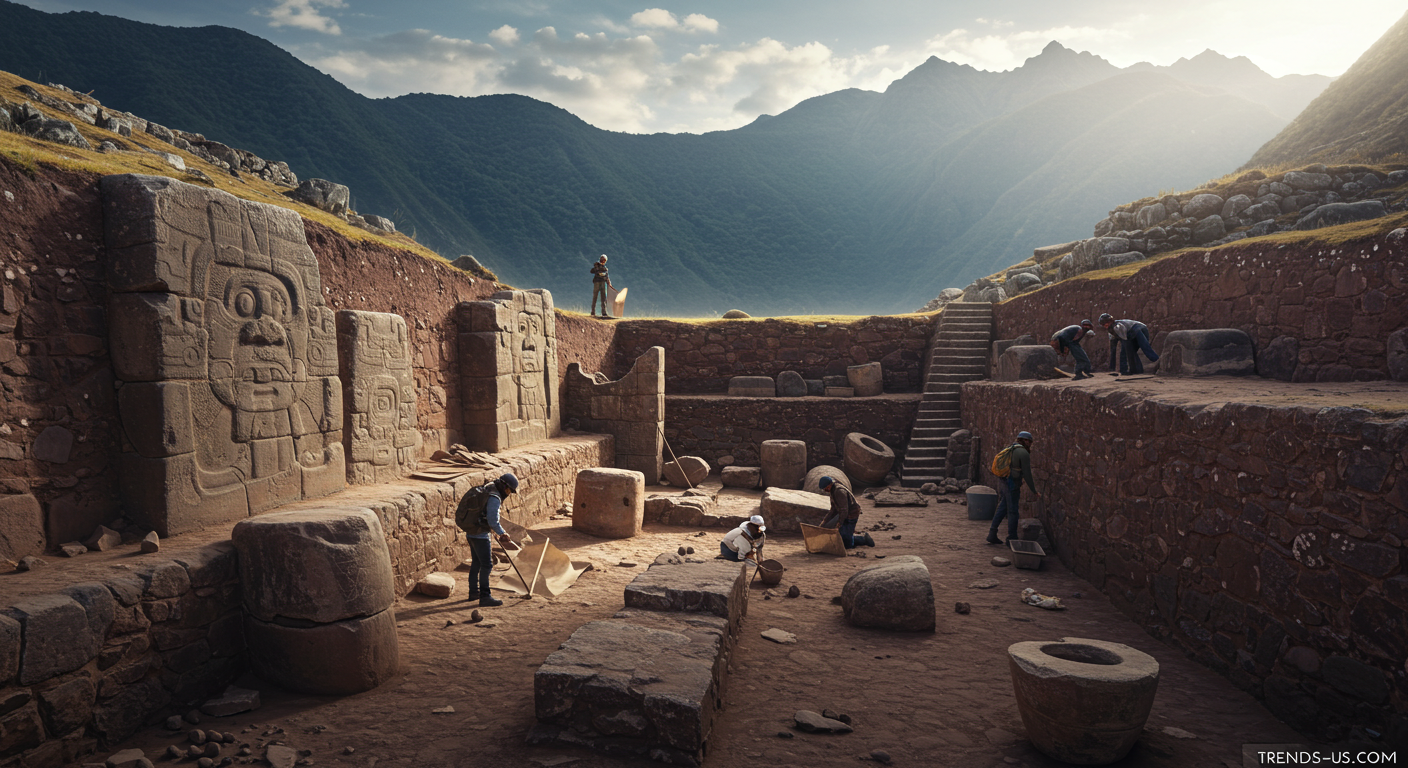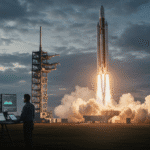Ancient Temple Unearthed in Peru: Clues to a Pre-Incan Civilization
Archaeological discoveries in Peru reveal a treasure trove of insights regarding ancient civilizations that once flourished long before the well-known Inca Empire. Among the most significant of these findings is the unearthing of an ancient temple, which provides a window into the lives, beliefs, and civilization of pre-Incan societies.
The Discovery: Location and Context
The recent excavation took place near the Andean foothills, in an area rich with historical significance. This site, located in the northern region of Peru, is not only remarkable for its structure but also for its preserved artifacts, including pottery, ceremonial tools, and burial remains. Dating techniques estimate the temple’s origin to approximately 2000 BCE, indicating that it was built by a society that predates the Incas by several millennia.
Architectural Features of the Temple
The architectural style of the temple showcases advanced engineering skills. The structure features an intricate layout with multiple platforms and terraces, signifying its importance as a ceremonial site. The use of locally sourced stone and mud bricks reflects the ingenuity of the pre-Incan builders. The temple’s design suggests a significant understanding of astronomy, with certain constructions aligning with celestial bodies, which may have played a role in agricultural cycles.
Ritualistic Practices
Items found within the temple offer key insights into the ritualistic practices of the civilization. Archaeologists discovered ceremonial vessels, ornaments made of precious metals, and evidence of sacrificial offerings. Pottery depicting deities points to a polytheistic belief system, indicating that these ancient people had a multifaceted understanding of the divine. Some artifacts suggest that maize and other crops featured prominently in religious ceremonies, highlighting the agricultural foundation of the society.
Social Structure Insights
The artifacts uncovered provide valuable clues into the social hierarchy of the civilization. The presence of elite burial sites alongside everyday community graves indicates a complex societal structure with distinct social classes. Ornamental artifacts found with the elite remains, such as intricately crafted jewelry and ceremonial masks, suggest that status was clearly defined and likely played a crucial role in community interactions.
Connection to Other Pre-Incan Cultures
This discovery places the ancient civilization in an interconnected network with other known pre-Incan cultures, such as the Moche and Chavín. Trade routes, formed through rivers and highland paths, facilitated the exchange of goods and cultural practices. The overlap in artistic style and pottery designs suggests a shared aesthetic influence, revealing a tapestry of cultural exchange long before the rise of the Inca.
Agricultural Practices and Innovations
The location of the temple near fertile valleys indicates the civilization’s reliance on agriculture. Evidence of ancient irrigation systems showcases their understanding of water management, crucial for sustaining crops such as maize, beans, and squash. The findings support the idea that agricultural innovation was essential for societal growth and stability, forming the backbone of their economy.
Spiritual Symbolism
The iconography on several ceremonial items suggests that animals and natural elements played a significant role in their spirituality. Figures of jaguars, serpents, and birds are found intricately depicted in pottery and carvings, symbolizing various aspects of life and spirituality. These animal symbols likely represented power, fertility, and the dual nature of existence—reflecting the civilization’s deep connection to the natural world.
Preservation and Conservation Efforts
As more excavations unfold, preserving the temple’s site becomes increasingly vital. Conservationists work diligently to protect the artifacts and structures from environmental degradation and human interference. Strategies include controlled excavation methods, controlled exposure to air and light, and the establishment of protective barriers to ensure the site’s longevity.
Community Involvement and Benefits
The discovery has fostered increased interest in archaeology among local communities. Educational programs aim to inform residents about the historical significance of their lands. Initiatives encourage involvement in the preservation of their heritage while fostering pride in their ancestry, promoting tourism activities that benefit the local economy.
Future Excavations and Research Directions
Given the ongoing discoveries at this site, future excavations promise even more findings. Researchers are particularly interested in uncovering additional structures that might provide greater context regarding the civilization’s daily life, trade practices, and interactions with neighboring cultures. Advanced techniques such as ground-penetrating radar and drone mapping are set to enhance exploration efforts.
The Impact on Understanding Ancient Civilizations
The unveiling of this ancient temple not only enriches our understanding of Peru’s pre-Incan heritage but also alters the broader narrative of ancient civilizations in the Americas. It underscores that sophisticated societies existed with complex social structures, religious practices, and agricultural systems long before the emergence of the Inca Empire.
Educational Outreach and International Collaboration
As knowledge surrounding the temple expands, partnerships between Peruvian archaeologists and international researchers become more crucial. Collaborative efforts facilitate knowledge sharing, technology transfer, and expertise that can enhance local archaeological practices. Educational outreach expands the understanding of the region’s history, inspiring future generations to explore their cultural roots.
Enrichment of Cultural Heritage
The temple’s discovery acts as a vital catalyst in promoting cultural heritage awareness. The artifacts unearthed contribute to national identity and allow Peruvians to reconnect with their ancestral roots. As museums and cultural institutions showcase these findings, they help bridge the past with the present and promote global understanding of Peru’s rich historical tapestry.
Preserving Memories of the Ancients
As research continues, the ancient temple stands as a symbol of resilience and creativity. It reminds us that beneath the modern landscape of Peru lies a history filled with profound human achievements. The stories told by these ancient ruins inspire ongoing curiosity and devotion to uncovering the lost narratives of humanity’s past, ensuring that the legacies of these pre-Incan civilizations are not forgotten but celebrated.



